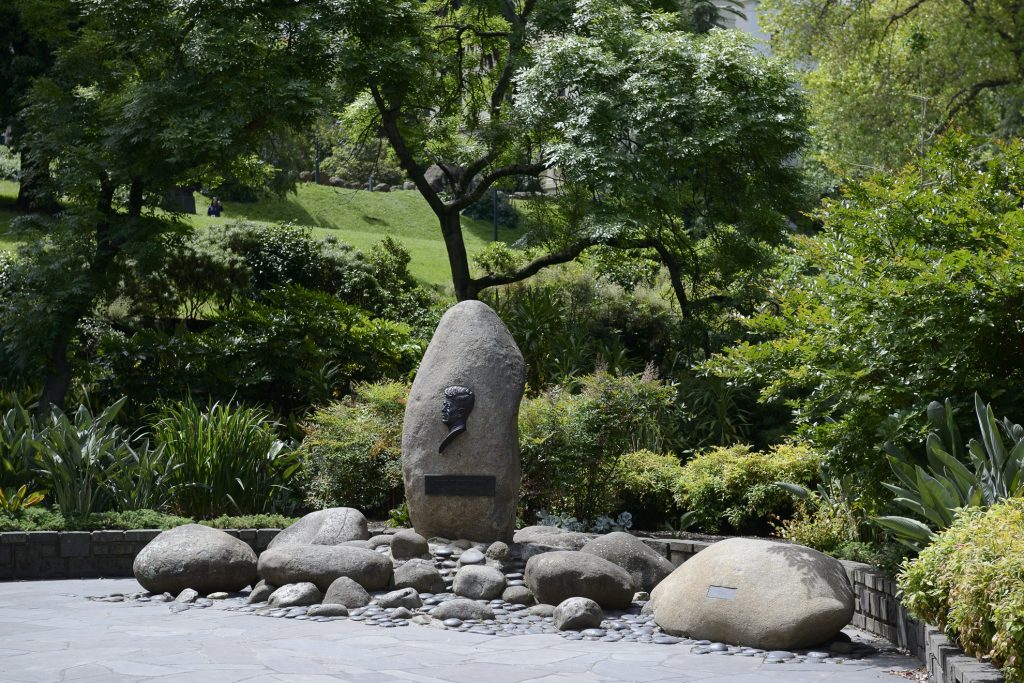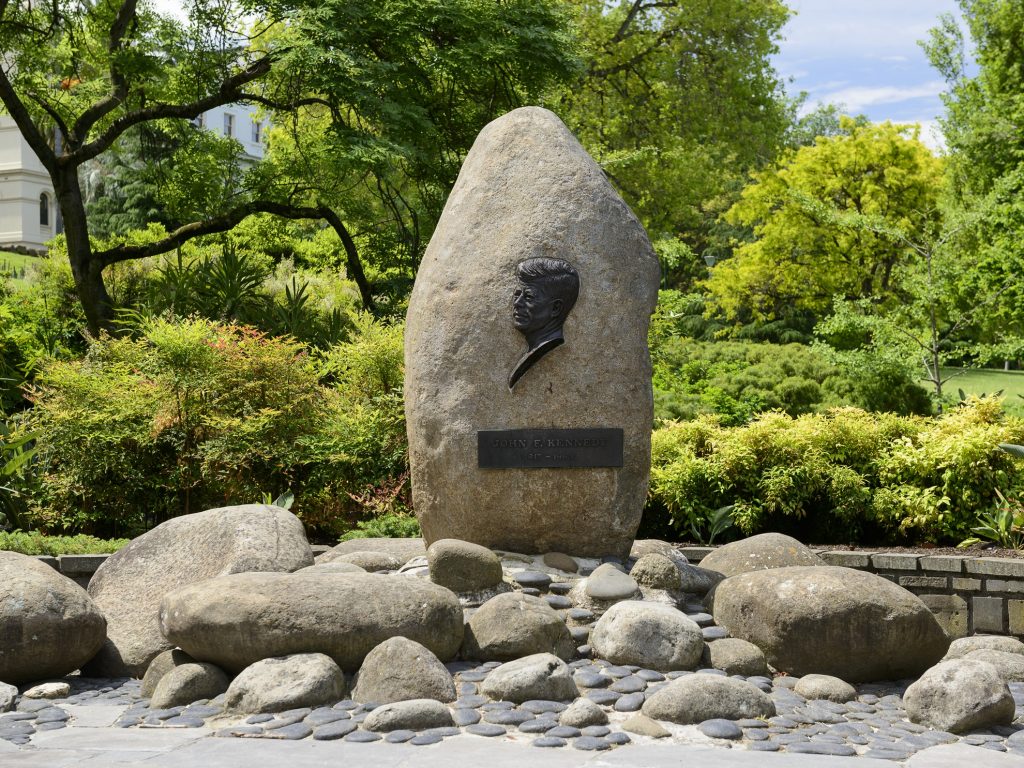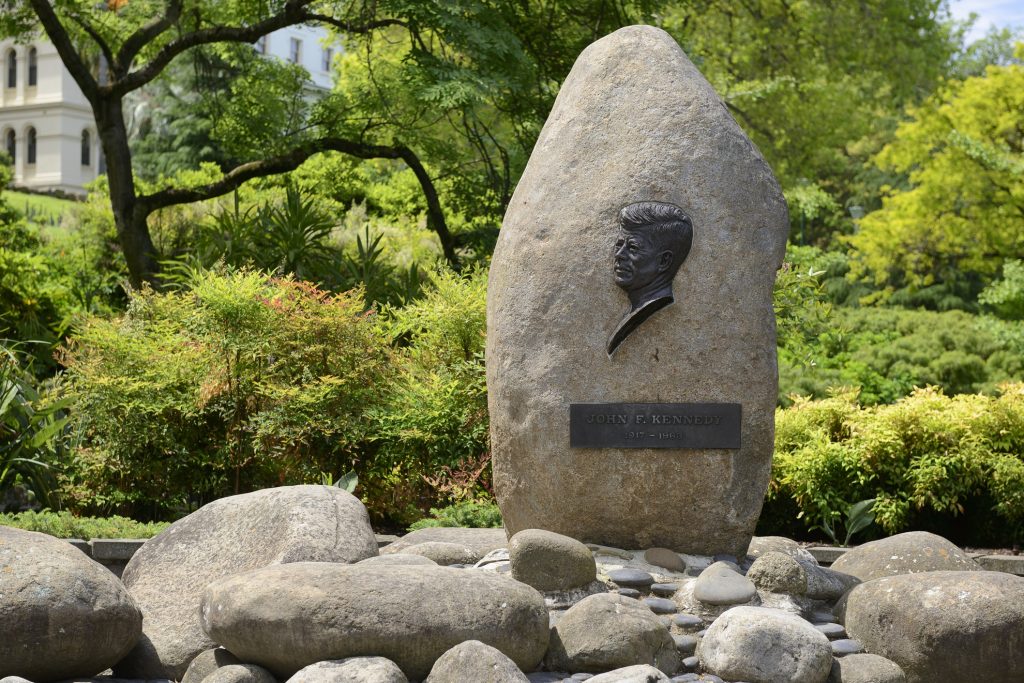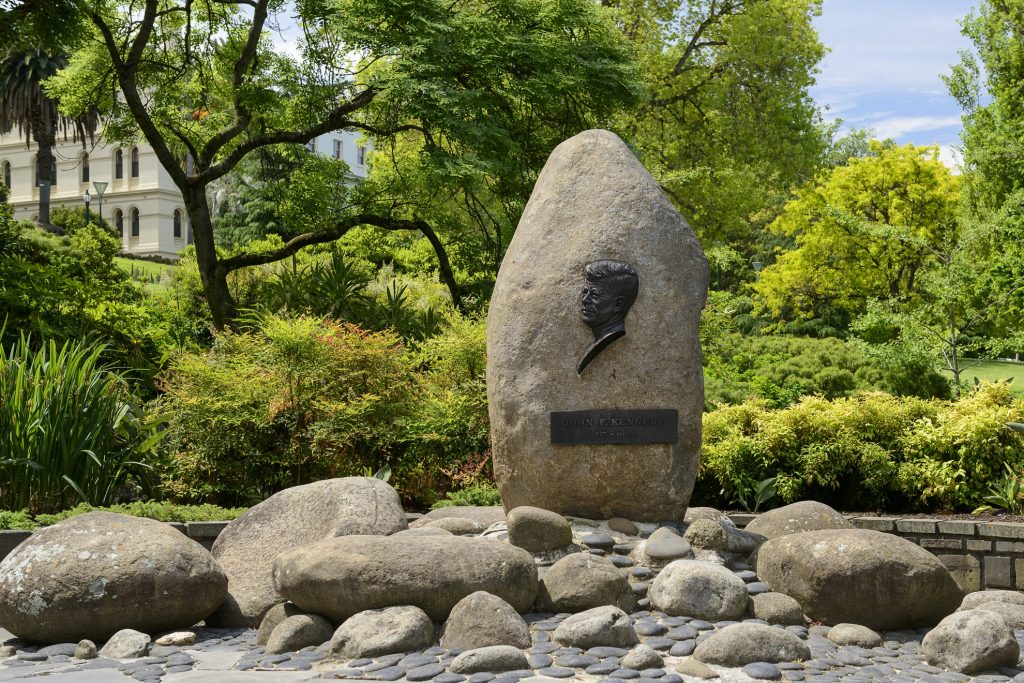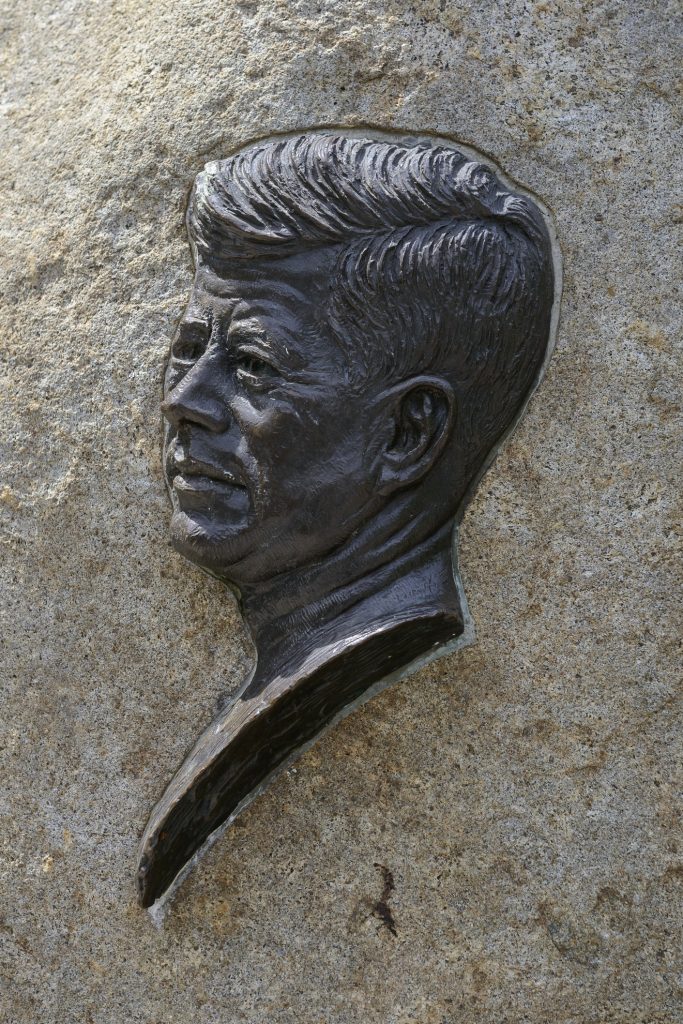JOHN F KENNEDY / 1917 - 1963 / THIS MEMORIAL WAS UNVEILED / BY THE RIGHT HONOURABLE / THE LORD MAYOR OF MELBOURNE, / COUNCILLOR E LEO CURTIS, JP / ON 25TH MARCH 1965 / THIS MEMORIAL SIGNIFIES THE GRATEFUL REGOGNITION / BY THE CITIZENS OF THIS CITY FOR THE SERVICE / GIVEN BY JOHN F. KENNEDY / AS PRESIDENT OF THE UNITED STATES OF AMERICA / 1961 - 1963
John F. Kennedy Memorial, Raymond B. Ewers, bronze bas-relief head set in granite boulder on landscaped site, 1965, Treasury Gardens
Summary
Location: Treasury Gardens
Bronze bas relief head set in a granite boulder. Decorated with natural rocks, plants and slate surroundings.
An official war artist, Ewers produced many fine memorials in the wake of the war, including the Drouin War Memorial, the Kakoda Memorial in Papua New Guinea and the Sir Thomas Blamey Memorial in Melbourne. Raymond Ewers said of his portrait, "Different people remember President Kennedy at different periods in his life. I chose to depict him worried and serious as he was shortly before his death."
Following the 1963 slaying of John F. Kennedy, Ewers was commissioned to cast a bronze portrait of the former US president. This was set in a granite boulder and sited in the tranquil Japanese Gardens within Treasury Gardens. The superintendent of Parks & Gardens and the city architect were responsible for site design and installation, which included remodelling the ornamental lake and building a bridge to the island where the monument would form the centrepiece. A paved area and a bronze flagpole were added, with the intention of reflecting Kennedy’s final resting place at Arlington.
John Fitzgerald Kennedy was something of a new breed of US politician. Born to a wealthy family with political pedigree, he was the youngest man ever elected president, and he brought vibrancy to government that gave hope to many Americans. Kennedy was sworn in as president in January 1961, calling his campaign ‘The New Frontier’. Besides averting a nuclear war with the Soviets over the 1962 Cuban missile crisis, his administration spearheaded many progressive causes. While riding in an open-top limousine through the streets of Dallas, Texas, Kennedy was shot and killed by Lee Harvey Oswald on 22 November 1963.
This memorial is particularly significant for being a rare monument to an American. Memorials to prominent British figures attest to Australia’s links with the British Empire, but ours is not a society to commemorate with such solemnity its alliances with the US. One of the memorial’s plaques reads: ‘This memorial signifies the grateful recognition / by the citizens of this city for the service / given by John F. Kennedy / as President of the United States of America / 1961–1963’.
